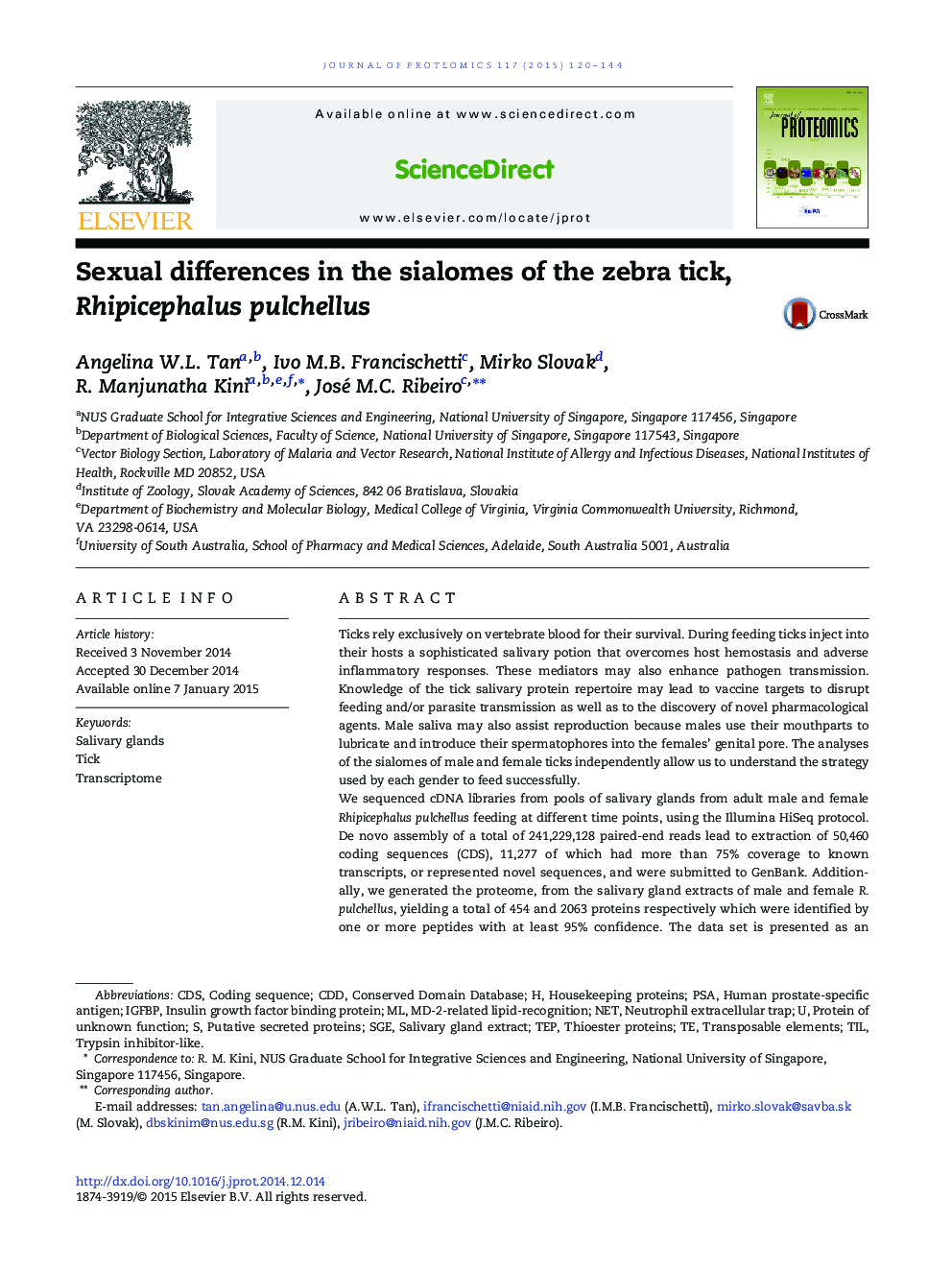| کد مقاله | کد نشریه | سال انتشار | مقاله انگلیسی | نسخه تمام متن |
|---|---|---|---|---|
| 1225708 | 1494763 | 2015 | 25 صفحه PDF | دانلود رایگان |

• We report the first deep-sequencing transcriptome of ticks aimed at distinguishing salivary gender-specific transcripts.
• Over 11,000 coding sequences have been publicly deposited, serving as a discovery platform.
• These proteins may be functionally analogous to seminal proteins of both vertebrates and invertebrates.
• A detailed study of a dual Kunitz family of peptides is presented.
Ticks rely exclusively on vertebrate blood for their survival. During feeding ticks inject into their hosts a sophisticated salivary potion that overcomes host hemostasis and adverse inflammatory responses. These mediators may also enhance pathogen transmission. Knowledge of the tick salivary protein repertoire may lead to vaccine targets to disrupt feeding and/or parasite transmission as well as to the discovery of novel pharmacological agents. Male saliva may also assist reproduction because males use their mouthparts to lubricate and introduce their spermatophores into the females' genital pore. The analyses of the sialomes of male and female ticks independently allow us to understand the strategy used by each gender to feed successfully.We sequenced cDNA libraries from pools of salivary glands from adult male and female Rhipicephalus pulchellus feeding at different time points, using the Illumina HiSeq protocol. De novo assembly of a total of 241,229,128 paired-end reads lead to extraction of 50,460 coding sequences (CDS), 11,277 of which had more than 75% coverage to known transcripts, or represented novel sequences, and were submitted to GenBank. Additionally, we generated the proteome, from the salivary gland extracts of male and female R. pulchellus, yielding a total of 454 and 2063 proteins respectively which were identified by one or more peptides with at least 95% confidence. The data set is presented as an annotated hyperlinked Excel spreadsheet, describing 121 putative secreted protein families. Female and male specific transcripts were identified.Biological significanceThis annotated R. pulchellus database represents a mining field for future experiments involving the resolution of time-dependent transcript expression in this tick species, as well as to define novel vaccine targets and discover novel pharmaceuticals. Gender specific proteins may represent different repertoires of pharmacological reagents to assist feeding by each sex, and in males may represent proteins that assist reproduction similarly to seminal proteins in other animals.
Figure optionsDownload high-quality image (219 K)Download as PowerPoint slide
Journal: Journal of Proteomics - Volume 117, 18 March 2015, Pages 120–144